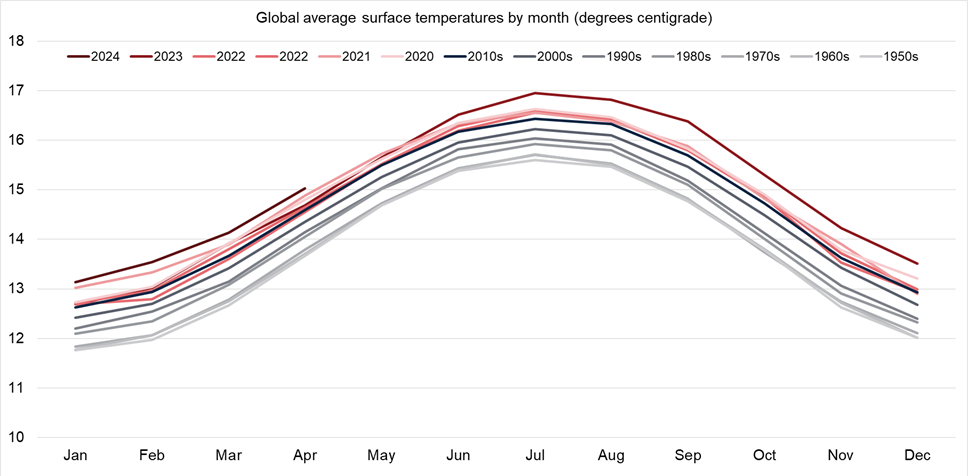


Members of The Conference Board get exclusive access to the full range of products and services that deliver Trusted Insights for What's Ahead ® including webcasts, publications, data and analysis, plus discounts to conferences and events.
04 June 2024 / Quick Take
Nearly halfway through 2024, it is likely that this year will break the global temperature records set in 2023. Parts of India have been suffering a heat wave of above 120 degrees F; the heat index in Miami rose above 112 degrees F in early May, exceeding prior records by 12 degrees. Workers exposed to these adverse conditions risk their health, while productivity plummets and costs rise for businesses. In addition, excessive heat can create water shortages, worsen drought conditions, and reduce crop yields.
Nearly halfway through 2024, it is likely that this year will break the global temperature records set in 2023. Parts of India have been suffering a heat wave of above 120 degrees F; the heat index in Miami rose above 112 degrees F in early May, exceeding prior records by 12 degrees. Workers exposed to these adverse conditions risk their health, while productivity plummets and costs rise for businesses. In addition, excessive heat can create water shortages, worsen drought conditions, and reduce crop yields.
Businesses in agriculture, warehousing, and construction are most likely to experience lower worker productivity, more medical and sick leave claims, and loss of workers due to excessive heat. During this period of low unemployment and worker shortages, businesses need to implement a robust strategy to protect their labor force from high heat conditions. This includes more frequent breaks, access to water, and access to air-conditioned facilities. While the necessary investments may seem significant, they are likely minimal compared to the costs incurred from severe heat-related issues.


myTCB® Members get exclusive access to webcasts, publications, data and analysis, plus discounts to events.
You already have an account with The Conference Board.
Please try to login in with your email or click here if you have forgotten your password.
AI & Talent Transformation: Hiring, Skills, and Workforce Strategy
November 19, 2025
Plugged In or Power Outage? Corporate Risk in US Grid Capacity
September 24, 2025
AI & Talent Transformation: Hiring, Skills, and Workforce Strategy
November 19, 2025

